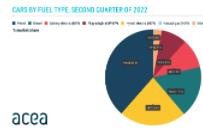India's electric vehicle movement is still alive and well, but not on four wheels
India's approach to electric vehicles seems to reflect the lessons learned from those mistakes. Instead of providing small subsidies to dozens of industries, as it has done in the past, the government is directing funds to a few key areas to help Indian companies build an electric vehicle ecosystem.
No more Tesla?
Modi also appears to have abandoned efforts to get Tesla to build a factory in India. Tesla CEO Elon Musk (Elon Musk) has said he will only build a factory in India if India lowers tariffs on imported cars so he can build a market for Tesla first by importing cars from Shanghai.
However, the Indian government has also taken a hard line and rejected Tesla's request for a tariff reduction. Gadkari, the Indian Minister of Road Transport and Communications, said that Tesla would not be able to sell Tesla made in China if it wanted to enter the Indian market for sales. In addition he stressed that Tesla should be manufactured locally in India and sold not only to the Indian market but also to other markets around the world.
Analysts say Modi is wise to stop pursuing Tesla. Tesla's cheapest car costs about $40,000, but most cars in India are priced at less than $10,000.
Auto industry executives say the reason the country is lagging behind in the popularity of electric cars is that batteries are too expensive. "It doesn't work economically." said R.C. Bhargava, chairman of India's largest automaker, Maruti Suzuki.
Core Competence: Cheap
About 15 years ago, Indian artisans and small businesses began importing electric motors and lead-acid batteries from China to assemble cheap electric cars. With little regulation, such electric vehicles became popular, creating safety and other problems. But they also created space for startups and established automakers looking to build more durable products.
Now, the Indian government and auto industry are betting heavily on low-cost electric vehicles. Competition and subsidies have made electric mopeds and three-wheeled cabs as cheap as, or even cheaper than, internal-combustion models. For just a few hundred dollars, some startups can convert internal combustion models to battery power. At the same time, the recent spike in oil and gas prices has made internal combustion models much more expensive to use.
"There are many parts of the world that don't buy $60,000 cars," says Bhavish Aggarwal, 37, founder and chairman of Indian electric two-wheeler maker Ola Electric, which makes electric mopeds at a plant in the southern state of Tamil Nadu. "There's a big difference in the technology used in hotter, dustier climates or on more potholed roads. India is like a very good microcosm of the rest of the world. If we can develop that model here, it's a good reference for other regions as well."
For India, it makes economic and environmental sense to start with smaller vehicles. Most of the country's transportation fuel is used by two- and three-wheelers, and car ownership is incredibly low: India has only 22 cars per 1,000 people, compared to 980 cars per 1,000 people in the United States.
China is the leader in small electric vehicles. The Wuling Hongguang Mini, sold by a joint venture between GM, SAIC and Wuling, costs $4,500. With a top speed of about 60 miles per hour (97 km/h) and a range of 100 miles (161 km/h), it is ideal for city driving.
Livelihood
For cab drivers like Singh, the main attraction of an electric car is the ability to save more money on gas so they can take more of their fare home with them.
"It provides a livelihood for our customers," says Suman Mishra, CEO of Mahindra Electric, a manufacturer of electric three-wheelers and other electric vehicles, "so it has a huge social impact."
Manufacturers say their biggest problem is keeping up with demand, and Ola has built its factory in a large stretch of palm trees in Pochampalli, a small town near Bangalore. The factory employs about 2,000 people, all of them women. Few women work in manufacturing in India, and the company wants to prove that they can. With the help of robots, the women test battery cells, produce battery packs, assemble mopeds that start at about $1,200, and ship them directly to customers.
India is proving that there is a huge market for even cheaper electric vehicles. But it's unclear whether India will be able to scale up production to transform its own transportation system and help bring cheap electricity to other developing countries. Raw materials to make batteries are in short supply worldwide, and Indian automakers have to compete with bigger companies like Tesla and General Motors.
OTHER NEWS
-
- Musk says self-driving cars are the future, but 70 percent of Americans don't believe it
- By 19 Sep,2022

-
- Musk: Tesla will be equipped with F1 pit stop technology to optimize service
- By 25 Jul,2022

-
- Delivery of Rivian R1S electric SUV begins
- By 29 Aug,2022

-
- Ford's new F-150 Lightning all-electric pickup will go up in price, starting at around $317,100
- By 10 Aug,2022

-
- Volvo starts mass production of heavy-duty electric trucks: 44 tons total weight
- By 19 Sep,2022

-
- EU electric car sales up 11.1% in Q2 this year as fuel car share shrinks
- By 22 Jul,2022
